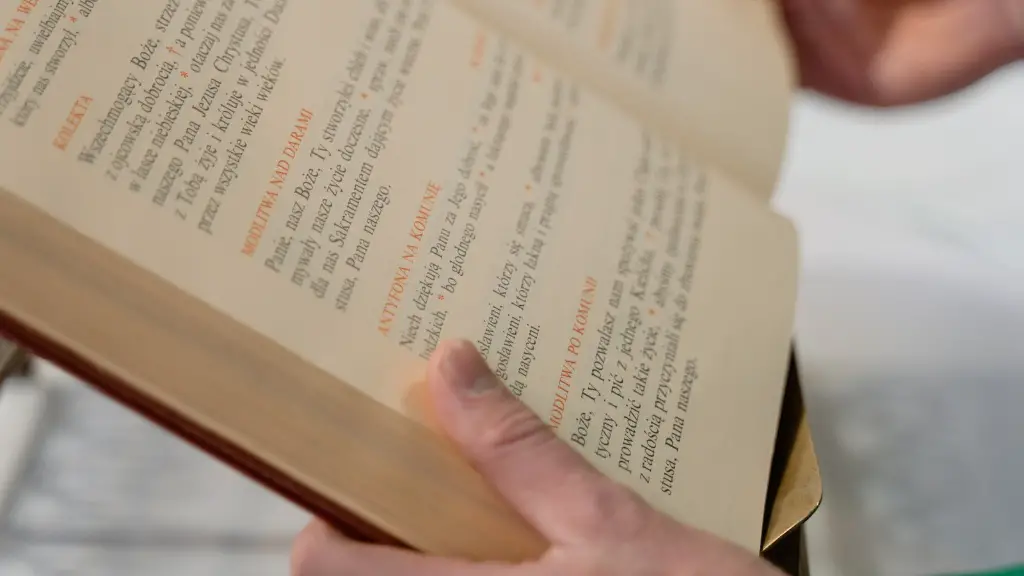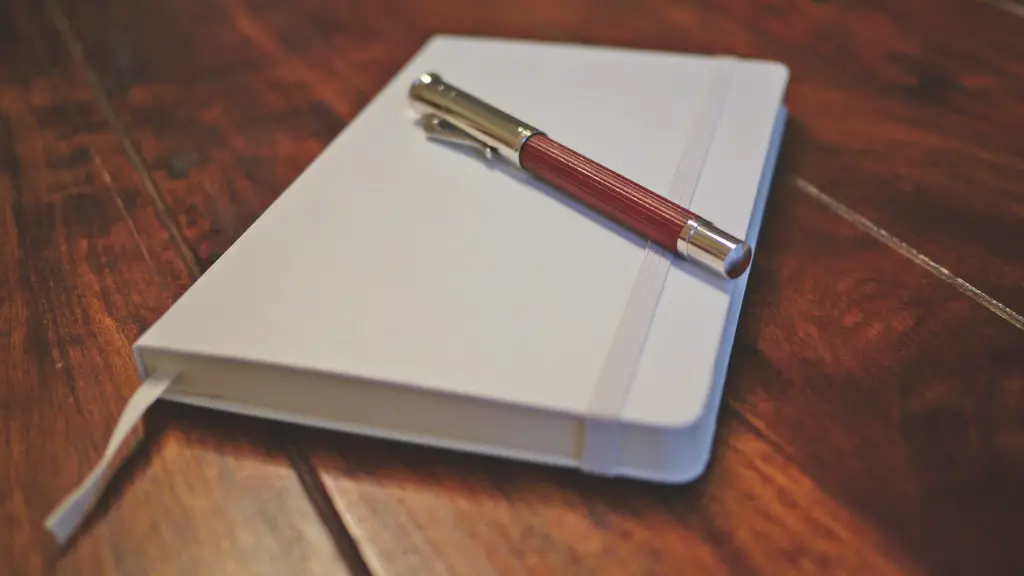Tips on Writing About Poetry
Poetry is often the most challenging type of writing to tackle. It requires precision and structure, while still allowing creativity and imagination to be included in the writing. Although poetry can be intimidating to tackle, it can also be one of the most rewarding pieces of writing to create. Here are some useful tips to help you tackle writing about poetry:
1. Analyse the Poem
The first step in writing about poetry is analysing the poem. While reading the poem, make notes of key words that are being used and take notice of any patterns or themes that the poem may have. Keep in mind the poet’s purpose and examine the structure of the poem. Look closely at elements such as rhyme, metaphor, and alliteration. Conduct research on the poet and their influences to understand the context of their poem.
2. Support Your Analysis with Evidence
Once you have conducted your analysis, it is important to back it up with evidence. This could be done through the use of quotes or by referring to specific lines within the poem. Explain in detail why the evidence is being used and how it supports your argument. It is important to remain impartial and objective, rather than expressing your own personal opinion.
3. Use the Active Voice
When writing about poetry it is important to use the active voice. This is when the subject of the sentence performs the verb, for example: “She walked to the store”. This ensures that the poem is being discussed and not the reader. The active voice also makes the essay flow more naturally. By avoiding the passive voice, the reader can focus more on the poem rather than the writer.
4. Include Your Own Insights
While it is important to remain objective, it is also important to express your own insights in the essay. Include your own analysis and opinions, reflecting on specific aspects of the poem. Explain the overall theme of the poem and how certain lines contribute to that. Let your own emotions come into the writing, helping to bring out the beauty of the poem.
5. Use Advanced Grammatical Structures
Writing about poetry requires the use of advanced grammar. Utilise specific vocabulary and use a wide range of sentence structures. Attempt to phrase sentences in a more effective way. Using examples from the poem can also help to show how the poem can be interpreted in many different ways.
6. Employ Emotional Triggers
The poet has likely included emotional triggers to evoke certain feelings from the reader. While you are analysing the poem, be sure to identify the emotional triggers that are being used. Are the imagery and language being used to convey feelings of fear, happiness, excitement or sorrow? Understanding the emotions that the poet is attempting to convey can help you to convey it to the reader.
7. Respect the Poem
Writing about poetry should be done with respect and reverence. Poetry is an art form and should be treated as such. Rather than trying to prove a point or make a statement, approach the piece of writing with a sense of awe and admiration. A poem can contain personal reflections and thoughts, and should be respected accordingly.
A Focus on Metaphor
Metaphors are often used in poetry to help highlight certain aspects of the text. It is important to analyse the metaphor in detail and understand how it fits into the overall structure of the poem. Look closely at how the poet is using figurative language and try to decipher what message they are conveying.
1. Identify the Metaphor
When analysing a poem for metaphors, the first step is to identify them in the text. Look for lines that contain explicit comparisons and take note of the imagery being used. Metaphors can often be difficult to spot as they are more subtly placed within the text.
2. Explain the Significance
Explain the significance of the metaphor in relation to the poem as a whole. Whenever discussing a metaphor in an essay, it is important to give a thorough analysis of what the metaphor can represent. This can help to convey a deeper understanding of the poem and provide insight into the poet’s intentions.
3. Connect to the Theme
Look for ways to connect the metaphor to the overall theme of the poem. Explain how the metaphor can be interpreted in many different ways, and how it can be used to convey the poet’s message. Understand the implications of the metaphor, both on an individual level and as part of the poem as a whole.
4. Discuss the Relevancy
Discuss how the metaphor is still relevant and applicable in the modern day. Think about how the metaphor can be connected to current events and issues that are occurring. Instead of simply noting the implications of the metaphor, look for ways to explain why the metaphor still holds true today.
5. Showcase Creativity
Include your own insights and creativity when writing about the metaphor. Bring your own individual perspective to the poem and use poetic devices of your own. Share your own thoughts and interpretations of the metaphor, allowing the poem to come to life for the reader.
Exploring Rhyme in Poetry
Rhyme is often used as an integral part of a poem, helping to give the poem structure and flow. Rhymes can help to create vivid imagery, allowing the poem to become more memorable and engaging. Here are some key points to consider when exploring rhymes within poetry:
1. Identify Structural Patterns
When looking at a poem to find rhymes, the first step is to identify any structural patterns. This could include matching lines or pairs, similar intonations and repeated words. Many poems have a traditional rhyme scheme that can be used to identify certain patterns.
2. Listen to the Poem
When exploring a poem for metaphors, it can help to actually listen to the poem. This will allow you to pick up any subtle rhymes that may have been missed when reading. You may also pick up on certain patterns in the poem by listening to the intonation.
3. Rely on Senses
In order to understand the rhymes within a poem, you need to rely on all of your senses. Notice the imagery that is being used and examine the context of the poem. Listen carefully to the intonation and look for subtle rhymes.
4. Consider Different Rhyme Types
When analysing rhymes for a poem, it is important to consider different types of rhymes. This includes assonance, consonance and sight rhymes. These can help to build a sense of musicality in the poem and give it an added level of complexity.
5. Reflect on the Meaning
Finally, think about what the rhymes can signify within the poem. Consider why the poet has chosen certain rhymes and what that could mean in relation to the overall meaning of the poem. Go beyond simply analysing the rhymes and focus on the meaning they hold.
Highlighting Imagery
Imagery is used in poetry to help the reader visualise certain occurrences. It is an important way of conveying the message of the poem, providing vivid detail and description. Here are some useful tips for highlighting imagery in poetry:
1. Identify Descriptive Language
When examining a poem for imagery, the first step is to identify any lines that contain descriptive language. Look for words that evoke certain senses, such as sight, sound, taste and touch. Think about how these can be used to create a vivid image in the reader’s mind.
2. Note the Presence of Metaphors
Explicit metaphors can also be used to create vivid imagery in the reader’s mind. Note down any metaphors that are being used and analyse their implications. How are they being used to convey the meaning of the poem?
3. Focus on Setting and Character
Look for descriptive words or phrases that help to create a sense of setting and character. What can be gathered about the characters? Are there certain physical attributes that are being highlighted? Consider what the poem is attempting to say about the setting and the characters.
4. Examining Imagery Beyond Words
Think beyond the literal words that are being used and consider the implications of the imagery. While literal words may be used to describe certain images, what underlying message is being conveyed? How do the images interrelate to one another?
5. Use Vivid Imagery of Your Own
Finally, when writing about the imagery in a poem, include vivid imagery of your own. Use creative language to describe images and evoke certain feelings from the reader. Think about how the imagery fits together as part of the poem and how it can contribute to the overall message.





